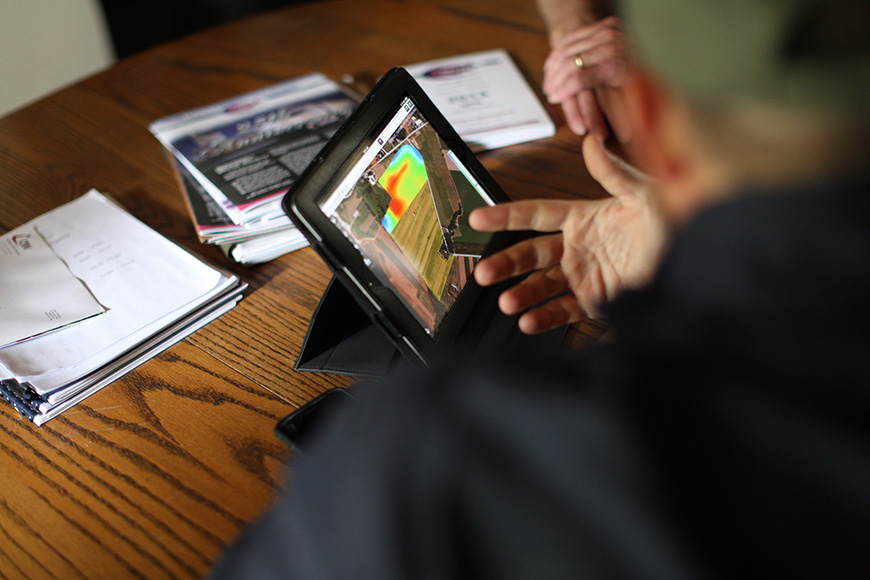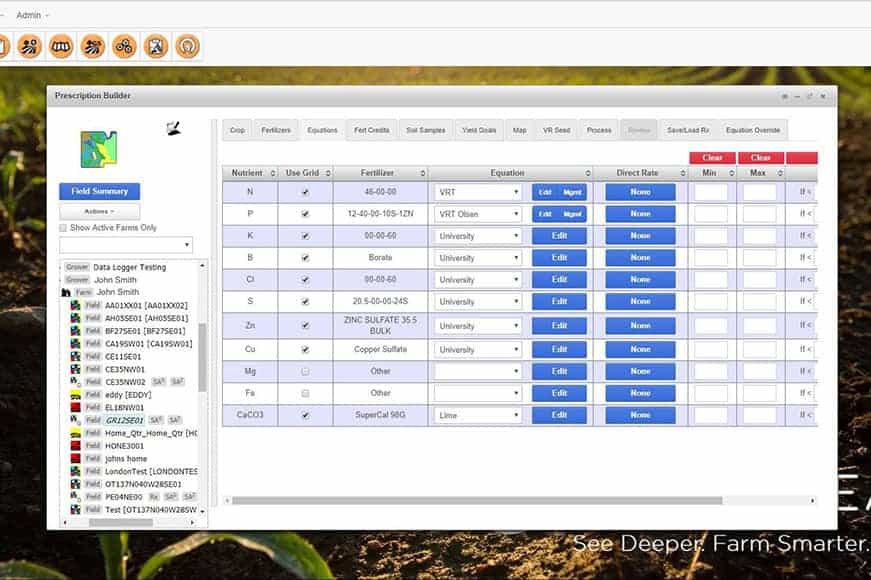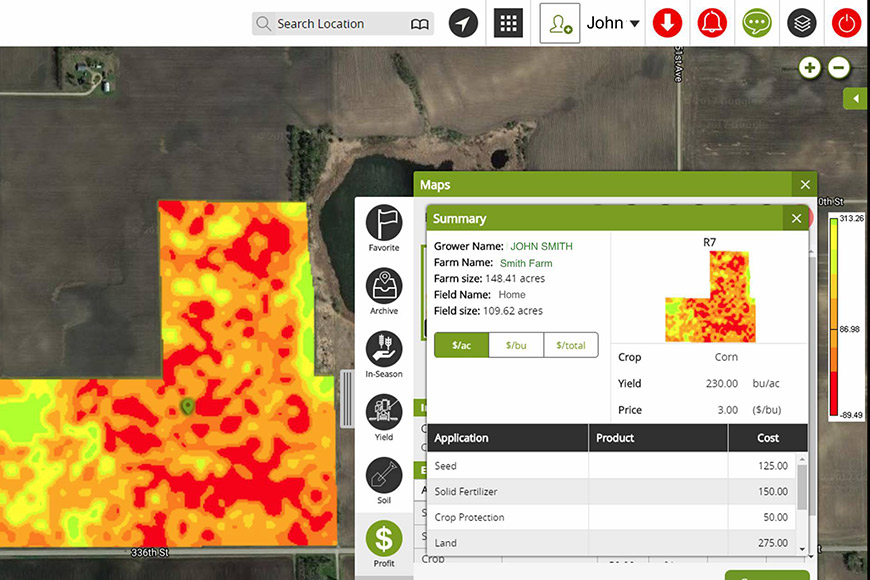Factor Tech Into 2019 Planning

How was your 2018? Already have some ideas for things you’d change in 2019? Be sure to use technology to help make planning for the coming year easier and more precise.
Here’s how you and your local trusted advisor can take advantage of tech to help plan for a better 2019.
1. Build a nutrient database.
Review your NutriSolutions® tissue sample results from 2018 to identify nutrient deficiencies and see how you handled them during the year. For example, did overly wet or dry soil conditions contribute to nitrogen or phosphorus deficiencies? Evaluate results with your advisor to identify causes for deficiencies and create a nutrient plan.
2. Look at field performance.
The R7® Field Monitoring Tool provides a look at growth patterns throughout the season and overall crop development post-season so you can use that historical information for future decision-making. The plant vigor analysis allows you to view trends over the season so you can see how your fields performed this year compared to previous years, or to other fields of the same crop. Use this tool post-season to see what level of management was used to achieve the most favorable results and the effects of weather on your ending yield.
3. Narrow the yield gap.
The R7 Field Forecasting Tool employs predictive modeling to forecast the number of bushels your fields could deliver. Compare this information with the number of bushels your fields have the potential to yield and try to narrow this gap in 2019 through more precise management. For example, if you are planting a hybrid with a high response to nitrogen and a high response to fungicide, work with your advisor to determine when and how much nitrogen to apply and whether to use a split application; and when to optimally time fungicide applications to achieve the results you’re looking for.
4. Treat tech as an ally.
Don’t be intimidated by technology. Sometimes the best way to start using data is to concentrate on one field where you’d like to see a change for the better. Sit down with your advisor, look at your data, determine your plan for that field and start building from there. Your advisor can help you figure out where you need to start, what your endgame is and what to do in between to have a successful season.
Here’s how you and your local trusted advisor can take advantage of tech to help plan for a better 2019.
1. Build a nutrient database.
Review your NutriSolutions® tissue sample results from 2018 to identify nutrient deficiencies and see how you handled them during the year. For example, did overly wet or dry soil conditions contribute to nitrogen or phosphorus deficiencies? Evaluate results with your advisor to identify causes for deficiencies and create a nutrient plan.
2. Look at field performance.
The R7® Field Monitoring Tool provides a look at growth patterns throughout the season and overall crop development post-season so you can use that historical information for future decision-making. The plant vigor analysis allows you to view trends over the season so you can see how your fields performed this year compared to previous years, or to other fields of the same crop. Use this tool post-season to see what level of management was used to achieve the most favorable results and the effects of weather on your ending yield.
3. Narrow the yield gap.
The R7 Field Forecasting Tool employs predictive modeling to forecast the number of bushels your fields could deliver. Compare this information with the number of bushels your fields have the potential to yield and try to narrow this gap in 2019 through more precise management. For example, if you are planting a hybrid with a high response to nitrogen and a high response to fungicide, work with your advisor to determine when and how much nitrogen to apply and whether to use a split application; and when to optimally time fungicide applications to achieve the results you’re looking for.
4. Treat tech as an ally.
Don’t be intimidated by technology. Sometimes the best way to start using data is to concentrate on one field where you’d like to see a change for the better. Sit down with your advisor, look at your data, determine your plan for that field and start building from there. Your advisor can help you figure out where you need to start, what your endgame is and what to do in between to have a successful season.





